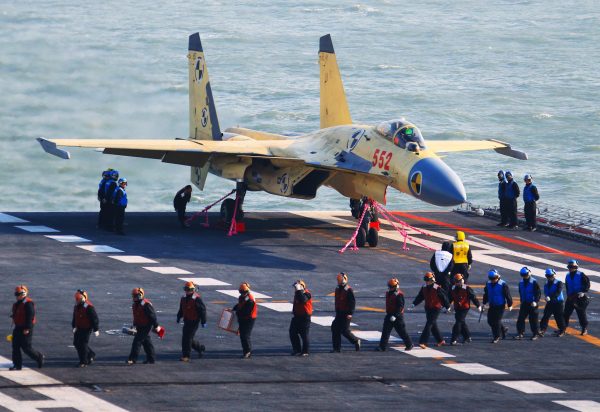

Follow us on:  
|


The Liaoning has been carrying out drills in the South China Sea since early December [Xinhua]
“Efforts should be made to provide greater science and technology support for the People’s Liberation Army,” Chinese media quoted Xi as saying.
“We must have a greater sense of urgency to push for science and technology innovation and advancement with greater determination and efforts,” Xi said, according to Chinese media reports, and carried by Reuters.
One particular area of focus has been the development of fifth-generation stealth fighter aircraft.
In November, China showcased its Chengdu J-20, a fifth-generation fighter jet at the 11th China International Aviation and Aerospace Exhibition at the Zhuhai Airshow Center in Guangdong province.
While the US is the only country with fifth-generation fighter craft in use – the F-22 Raptor, China, India, Japan, Russia and Turkey are producing their own.
Last month, China tested its the latest version of its FC-31 Gyrfalcon stealth fighter jet.
The prototype is the newest version of the J-31, first unveiled four years ago, which reportedly took to the skies for the first time on Friday in Shenyang, the capital of Liaoning province.
The aircraft, a twin-engine, fifth-generation fighter jet is reportedly China’s answer to the US F-35, which the United States sells exclusively. It is an upgraded version of the fighter jet which debuted four years ago because it has improved electronics and can carry more munitions, among other enhancements.
Fifth-generation technologies include stealth, advanced avionics and radar systems, and superior computing.
In December and January, China ran its sole Liaoning aircraft carrier successfully in the South China Sea. It also tested the Shenyang (or Flying Shark) carrier-based J-15 fighter jet.
The J-15 has a maximum speed of 2,550 kph and a range of 3,500 kilometers.
The BRICS Post with inputs from Agencies